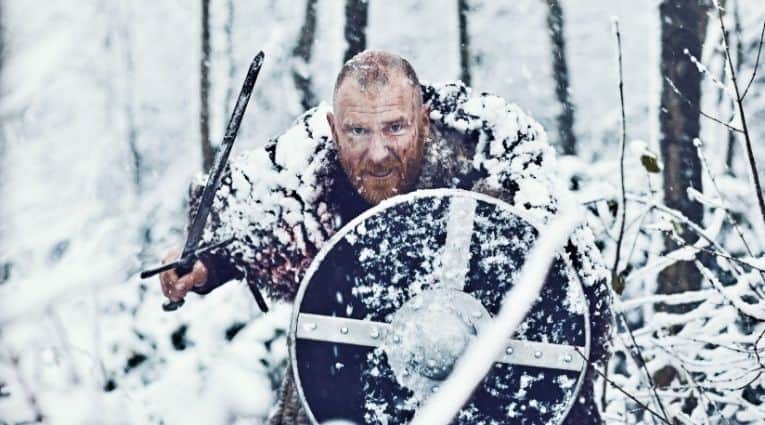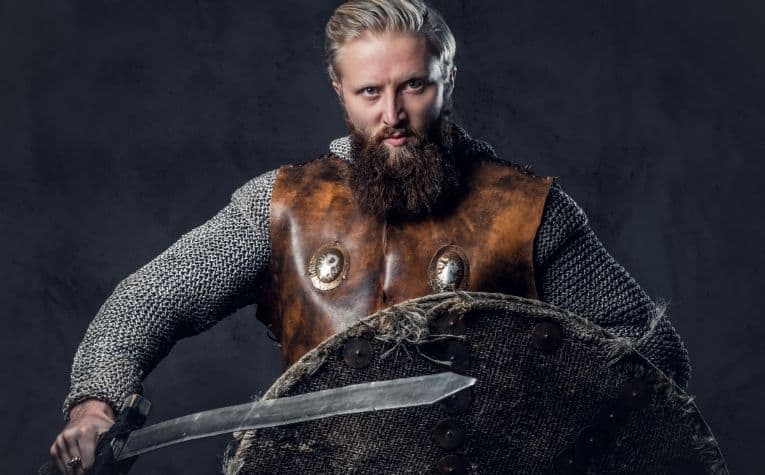The Vikings of Scandinavia and the Japanese samurai were the most formidable fighting forces in their respective parts of the globe.
With exploration and expansion taking place throughout the Middle Ages, the far reaches of the world became more accessible, and an armed encounter between these two regional powers would have seemed possible, if not likely, at some point.
There are no known instances of Vikings and samurai engaging in armed combat, and such a claim would be pure conjecture.
The furthest east that the Vikings traveled was the Middle East, and the furthest west that any Samurai ventured is Spain, and these excursions occurred centuries apart.
In history’s Pantheon of elite warriors, the Vikings and samurai cemented their places among the upper echelons of the most feared fighters of all time.
They were highly skilled, cold, and ruthless in their ways and unafraid of death.
The Viking Age did overlap with the rise of the Samurai in Japan, and while it is unknown whether they were ever aware of the other, there surely would have been mutual respect.
Ever wonder how Vikings fought? See The Viking shield: Why is it round, wooden and painted? to learn more.
Did Vikings and Samurai ever Fight?
One was a seafaring people whose warriors were feared for several centuries throughout Europe. The other was an elite fighting force that rose to prominence for 700 years in feudal Japan.

A Viking-samurai battle would surely have been a clash of epic proportions between highly skilled forces, the likes of which history has seldom seen.
The Viking Age in Europe and Beyond
From the late 8th century through the mid-11th century, the Vikings were a strong presence on the European scene.
The Norse people were fearsome warriors, savvy merchants, and courageous explorers, from their quick-strike raids and military excursions to their far-reaching trade routes and long voyages searching for undiscovered lands.
And, they were unafraid to leave familiar lands.
The Vikings were master shipbuilders who took centuries-old designs and greatly improved upon them.
In so doing, they produced their iconic longboats, which revolutionized the way that ships traveled.
This particular skill enabled the Vikings to expand their territories aggressively and engage in commerce with faraway trade partners like no other society in Europe during the Middle Ages.
The longboats also enabled Viking warriors to set their sights on targets of opportunities like abbeys and monasteries and terrorize distant population centers.
These vessels’ unique keels allowed them to be navigated in shallow water, including inland rivers, and even to be beached for rapid deployment of their forces.
This combination of stealth and maneuverability proved to be deadly for their victims.
Did Viking women fight? See Did Viking Women Go on Raids? to learn more.
More often than not, the Vikings plowed through feeble defenses and inferior enemy forces with their superior weaponry and combat skills.
Their archers hit long-range marks with deadly accuracy while their infantrymen, armed with spears, battle-axes, and swords, were known for their fearlessness and brutality in hand-to-hand combat. [1]
Did the Vikings Make it to the Far East?
As a testament to their navigational expertise and incredible geographical range, the Vikings not only established settlements in Iceland (over 900 miles from Scandinavia), they also reached Greenland to the west, and according to many scholars, the shores of North America.

With respect to Viking ventures eastward, historical accounts place the Vikings as far east of Europe as Constantinople (modern-day Istanbul, Turkey), and even further at the Caliphate of Baghdad in Iraq. [2]
The Viking presence in Constantinople (the “New Rome”), which served as the capital of the Roman Empire’s eastern theater as the western side began its collapse, is well documented.
The dreaded Varangian guard whose services were obtained by Basil II to defend Constantinople from its enemies, were in fact, Vikings by way of what is now modern-day Ukraine and Belarus. [3]
Although it seemed nothing could stand in the way of the Vikings and their marches outward from their native Scandinavia, by all accounts, the Middle East is the closest that the Vikings ever got to Asia proper.
This, therefore, left them thousands of miles away from the shores of Japan and its samurai warriors.
Ever wonder what the Vikings looked like? See The Viking Dress Code: What They Wore and Why to learn more.
The Samurai in Feudal Japan
Around the year 794, Japan entered a period of feudalism by which a network of wealthy landowners held governmental power.
A class of highly specialized warriors rose to prominence to protect these lords’ interests.
It became de facto rulers during the Shogun (warlord) era, which began in the 12th century. The Samurai remained an elite part of Japanese society until the late 1800s.
Training for a samurai began during childhood, often at age 10 or even younger.
Although the Samurai are famed for their swordsmanship, they were highly polished, all-around warriors with diverse skill sets.
For instance, the Samurai were accomplished fighters on horseback and highly skilled with the bow and arrow.
They also fought with double-edged spears.
But the weapon with which the Japanese Samurai will forever be associated is the curved, single-edge long sword known as a katana.
With its meticulously crafted steel blade, the katana is considered the sharpest and finest sword in the world during the Middle Ages.
To complement the katana, Samurai also carried a shorter blade known as the wakizashi (only elite Samurai were allowed to carry two swords).
While the Samurai were known for their finely honed combat skills, their code of honor is legendary.
When it came to warfare, these Japanese warriors believed in one-on-one duels, even in the midst of a large-scale battle.
Samurai warriors were presumed to fight to the death and would commit a specialized form of suicide known as seppuku rather than face disgrace or dishonor. [4] [5]
Europe Welcomed a Samurai Visitor

From the mid-1600s to the late 1800s, Japan underwent a period of isolation from the outside world.
Only when the self-imposed era of Sakoku came to an end, and the Japanese once again dispatched emissaries abroad, was the revelation made that nearly two and a half centuries prior, a samurai warrior had not only traveled to Europe but met with royal families and even came face-to-face with the Pope.
Hasekura Rokuemon Tsunenaga was a mid-level samurai who was dispatched by his lord Date Masamune to Europe to establish diplomatic and trade relations with Spain and formally invite Catholic missionaries to visit Japan.
Hasekura spent a total of two years in Europe with his traveling entourage and during that time visited:
- Spain – where Hasekura met with Spanish King Philip III, was formally baptized, and spent eight months meeting with various members of Spain’s royal family and religious leaders
- Italy – during his travels through Italy, Hasekura had a face-to-face meeting with Pope Paul V and, on behalf of Date Masamune, extended a formal invitation for Christian missionaries to visit Japan
- France – by the circumstance of bad weather on the Mediterranean Sea, Hasekura spent a few days in the French port town of Saint-Tropez, where he met with local leaders and nobility
Ironically, during Hasekura’s time away from Japan, his homeland initiated its exclusionary policies toward foreign interests and began ruthless persecution of Christians in Japan.
On his return to Japan, Hasekura himself may have been pressured to renounce his Christian faith and, according to some sources, may have even been martyred.
While Hasekura’s demise is unclear, what is beyond dispute is that a distinguished member of Japan’s warrior class traveled to Europe and met with people of great influence.
It is also clear that the nature of this visit was diplomatic, and this may have been the closest that a samurai ever got to Scandinavia, and it occurred over 500 years after the end of the Viking Age in 1066. [6]
The Vikings and Samurai Never Fought – But What if They Had?
While Europe was reeling from the first Viking raid along the English coastline in the year 793, the samurai class was taking root in Japan.
That these two military superpowers would burst onto the scene just a year apart would seemingly portend that their aggressions would ultimately bring them face-to-face in battle.
But as fate would have it, their paths never crossed, and a fight was not meant to be.
Which raises the inevitable question asked by history buffs and laypeople alike, if the Vikings and Samurai had met on the field of battle, who would have won?
As would be expected, opinions are evenly split.
While such a debate may be good fodder for reality television or video game forums, in the end, it would be a fruitless (but highly entertaining) exercise.
Final Thoughts
At the height of their power, the Vikings and the Samurai were synonymous with living and dying by the sword.
References:
[1] livescience.com
[2] en.natums.dk
[3] Sky history
[4] Ancient History
[5] history.com
[6] newworldencyclopedia.org
